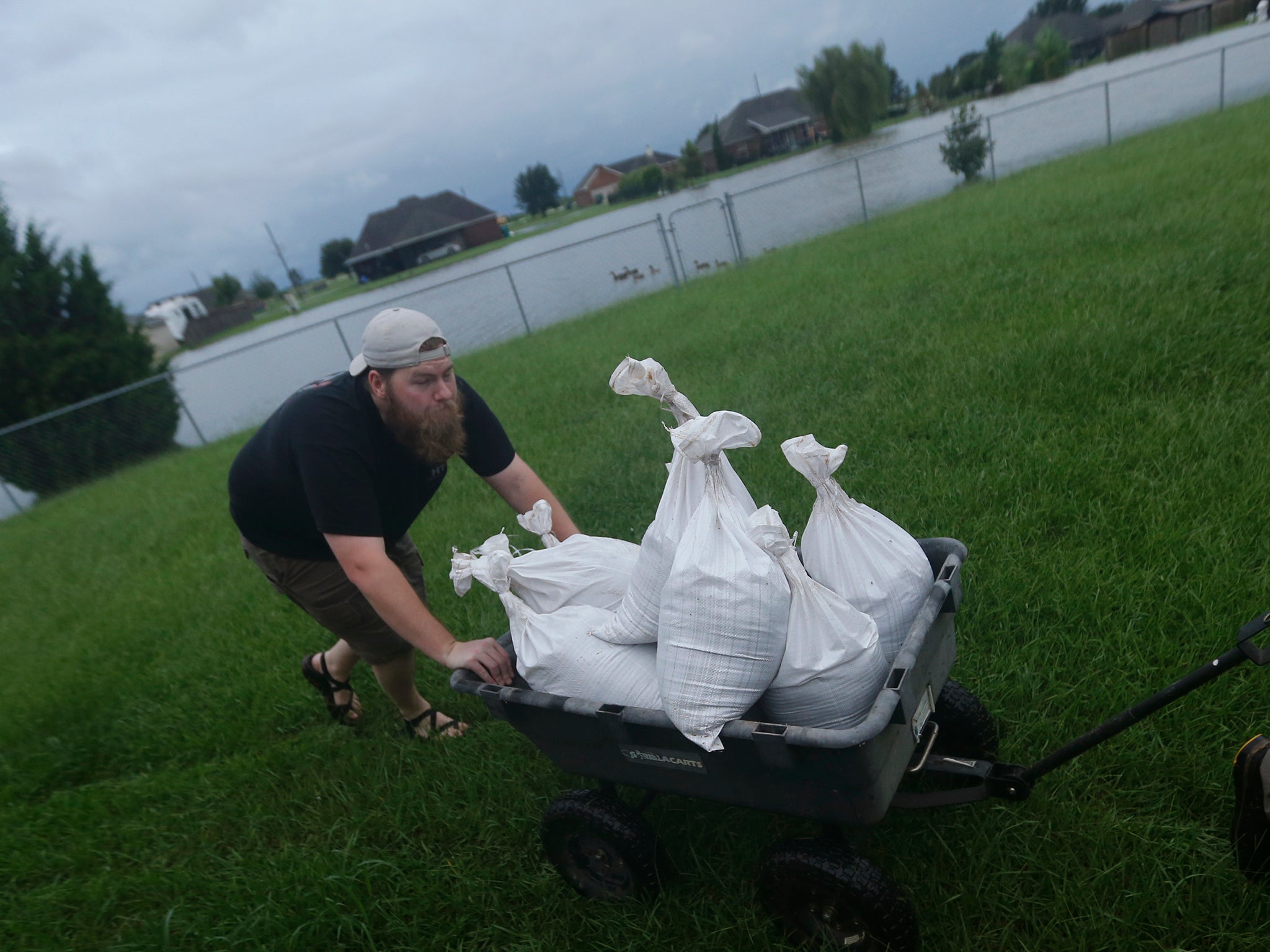Harvey makes landfall in Louisiana after Texas is devastated by heavy flooding
'We are dealing with a state that has already had a lot of rain this summer,' says National Guard

Your support helps us to tell the story
From reproductive rights to climate change to Big Tech, The Independent is on the ground when the story is developing. Whether it's investigating the financials of Elon Musk's pro-Trump PAC or producing our latest documentary, 'The A Word', which shines a light on the American women fighting for reproductive rights, we know how important it is to parse out the facts from the messaging.
At such a critical moment in US history, we need reporters on the ground. Your donation allows us to keep sending journalists to speak to both sides of the story.
The Independent is trusted by Americans across the entire political spectrum. And unlike many other quality news outlets, we choose not to lock Americans out of our reporting and analysis with paywalls. We believe quality journalism should be available to everyone, paid for by those who can afford it.
Your support makes all the difference.Tropical storm Harvey has made landfall for a second time, now in Louisiana, after drifting off the coast of Texas where it caused widespread and deadly flooding.
The storm came ashore just west of Cameron, Louisiana, bringing maximum sustained winds near 45mph, the US National Hurricane Centre (NHC) said.
Forecasters said another 13cm to 25cm of rain could fall in western Louisiana.
Harvey has devastated Houston, Texas, and surrounding areas with more than 1m of rainfall leaving roads and homes underwater.
At least 18 people have died.
Col Ed Bush, of the Louisiana National Guard, told CNN: "We are dealing with a state that has already had a lot of rain this summer, so we are very aware and conscious of the potential for flooding."
The tropical storm is expected to weaken and continue to the north.
"Once we get this thing inland during the day, it's the end of the beginning," said NHC meteorologist Dennis Feltgen. "Texas is going to get a chance to finally dry out as this system pulls out."
Harvey is forecast to drop substantial amounts of rain on Louisiana before moving on to Arkansas, Tennessee and parts of Missouri—which could also see flooding.
Mr Feltgen said there were still a lot of residents in multiple states "who are going to feel the impacts of the storm".
The National Weather service warned on Wednesday of potential flash floods, extending its flood alert to parts of Louisiana.
Harvey first made landfall on Friday in Texas as a Category 4 hurricane, the most powerful to hit Texas in more than 50 years.
Damage has been estimated at tens of billions of dollars, making it one of the costliest US natural disasters.
There is some relief in sight for Houston, the fourth most populous US city, with forecasters saying five days of torrential rain may come to an end as the storm picks up speed and leaves the Gulf of Mexico region later in the day.
Additional reporting by agencies
Subscribe to Independent Premium to bookmark this article
Want to bookmark your favourite articles and stories to read or reference later? Start your Independent Premium subscription today.
Join our commenting forum
Join thought-provoking conversations, follow other Independent readers and see their replies
Comments